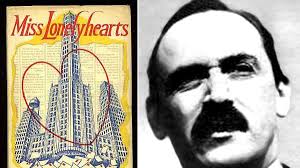by Lisa Herzog, Stephan Jonas, Philipp Kellmeyer, Karola Kreitmair, Michael Klenk, Eva Kuhn, and Kai Spiekermann
 Facebook, Amazon, Apple, Microsoft, and Google, often referred to as Big Tech, know more about you than your closest friends and family. They know who you are talking to and what you are talking about, what you are buying or are thinking of buying, how much money you have, and what your fears and desires are. What a few years ago may have sounded like a dystopic vision, is today a reality of our online life (our ‘onlife’). In this setting, even Facebook’s plans of introducing their own currency, Libra, does not seem out of the ordinary.
Facebook, Amazon, Apple, Microsoft, and Google, often referred to as Big Tech, know more about you than your closest friends and family. They know who you are talking to and what you are talking about, what you are buying or are thinking of buying, how much money you have, and what your fears and desires are. What a few years ago may have sounded like a dystopic vision, is today a reality of our online life (our ‘onlife’). In this setting, even Facebook’s plans of introducing their own currency, Libra, does not seem out of the ordinary.
While users of digital technology operate on an implicit assumption of trust this trust is misguided. The trouble is not merely that a given company records user behaviour within its own digital ecosystem but that companies integrate virtually all of our online activities from a plethora of sources, thereby making us transparent and vulnerable to observation, manipulation, and exploitation.
Tracking personal data streams has become the dominant business model of the web. What this means is that when a service is ‘free’ on the web, your data is the payment that sustains the business model. In this internet of humans, in which personal data have become the most valuable commodity, we have no meaningful control over who has access to such information and no power to amend, correct, or withdraw it. In light of recent push-back against online privacy violations, e.g. Facebook losing users and facing a $5bn fine after the Cambridge Analytica scandal, as well as a growing public animosity towards big tech (so-called tech-lash), companies have learned that user privacy concerns could hurt their revenue streams and thus should not be ignored. Unsurprisingly, most proposals by tech representatives intended to address these issues involve a thorough revision of privacy laws and some form of making money by selling privacy privileges, such as subscription models that permit the use of apps without providing data or enduring ads.
One could argue that people concerned with their privacy should just stop using online services altogether. But given the pervasiveness of interconnected digital technology, this is unrealistic. Read more »
 It was at this point I discovered Nathanael West. Although all his books had been published in the 1930s, they seemed to anticipate the America that was throbbing all around me, with its violence and disappointments, its spiritual emptiness, its foolishness and its freaks.
It was at this point I discovered Nathanael West. Although all his books had been published in the 1930s, they seemed to anticipate the America that was throbbing all around me, with its violence and disappointments, its spiritual emptiness, its foolishness and its freaks.

 When Adam Siepel was building algorithms for evolutionary genomics as part of his PhD, he wasn’t thinking about visualization. But, as a graduate student in the laboratory of computational biologist David Haussler, at the University of California, Santa Cruz (UCSC), he happened to sit next to the software engineers who were building and maintaining a tool called the UCSC Genome Browser. These engineers helped Siepel to make his algorithms publicly available as a track, or data overlay, that anyone could explore. Genome browsers are graphical tools that display the genome sequence, usually as a horizontal line. Other sequence-associated data are aligned and stacked above and below that line in ‘tracks’, for instance to illustrate the relationship between gene expression, DNA modification and protein-binding sites.
When Adam Siepel was building algorithms for evolutionary genomics as part of his PhD, he wasn’t thinking about visualization. But, as a graduate student in the laboratory of computational biologist David Haussler, at the University of California, Santa Cruz (UCSC), he happened to sit next to the software engineers who were building and maintaining a tool called the UCSC Genome Browser. These engineers helped Siepel to make his algorithms publicly available as a track, or data overlay, that anyone could explore. Genome browsers are graphical tools that display the genome sequence, usually as a horizontal line. Other sequence-associated data are aligned and stacked above and below that line in ‘tracks’, for instance to illustrate the relationship between gene expression, DNA modification and protein-binding sites.



 Childrearing practices in the United States underwent a radical alteration during a period from the last decade of the nineteenth century through the first few decades of the twentieth. In 1929, psychologists William Blatz and Helen Bott looked back on the changes they credited to Dr. Luther Emmett Holt, whose childcare manual was first published in 1894 and continued to come out in new editions every few years:
Childrearing practices in the United States underwent a radical alteration during a period from the last decade of the nineteenth century through the first few decades of the twentieth. In 1929, psychologists William Blatz and Helen Bott looked back on the changes they credited to Dr. Luther Emmett Holt, whose childcare manual was first published in 1894 and continued to come out in new editions every few years: I recently read Jill Lepore’s
I recently read Jill Lepore’s  At the heart of French existentialism – and especially the version associated with its most famous representative, Jean Paul Sartre – was the notion of radical freedom. On this view, when we choose, we choose our values and thus what kind of person we are going to be. Nothing can prescribe to us what we ought to value, and the responsibility of freedom is to accept this fact of the human condition without falling into the ‘bad faith’ which would deny it. The moment of existentialism may have passed, but the view that we are radical choosers of our values persists in many quarters, and so I want to consider how well this idea holds up, and what an alternative to it might look like.
At the heart of French existentialism – and especially the version associated with its most famous representative, Jean Paul Sartre – was the notion of radical freedom. On this view, when we choose, we choose our values and thus what kind of person we are going to be. Nothing can prescribe to us what we ought to value, and the responsibility of freedom is to accept this fact of the human condition without falling into the ‘bad faith’ which would deny it. The moment of existentialism may have passed, but the view that we are radical choosers of our values persists in many quarters, and so I want to consider how well this idea holds up, and what an alternative to it might look like. Facebook, Amazon, Apple, Microsoft, and Google, often referred to as Big Tech, know more about you than your closest friends and family. They know who you are talking to and what you are talking about, what you are buying or are thinking of buying, how much money you have, and what your fears and desires are. What a few years ago may have sounded like a dystopic vision, is today a reality of our online life (our ‘onlife’). In this setting, even Facebook’s plans of introducing their own currency, Libra, does not seem out of the ordinary.
Facebook, Amazon, Apple, Microsoft, and Google, often referred to as Big Tech, know more about you than your closest friends and family. They know who you are talking to and what you are talking about, what you are buying or are thinking of buying, how much money you have, and what your fears and desires are. What a few years ago may have sounded like a dystopic vision, is today a reality of our online life (our ‘onlife’). In this setting, even Facebook’s plans of introducing their own currency, Libra, does not seem out of the ordinary.
 A long time ago, on a mountainside in Liechtenstein, I tuned my transistor radio to the Deutschlandfunk, one of neighboring Germany’s state radio stations whose broadcast range leaked into that tiny country. This is what I heard:
A long time ago, on a mountainside in Liechtenstein, I tuned my transistor radio to the Deutschlandfunk, one of neighboring Germany’s state radio stations whose broadcast range leaked into that tiny country. This is what I heard: Biographies frequently provide us with insights into individual characters in a way that autobiographies might not: the third person narrator offers the prospect of greater ‘objectivity’ when evaluating and narrating information and events and circumstances. And so it is with Paul Avrich and Karen Avrich’s Sasha and Emma: The Anarchist Odyssey of Alexander Berkman and Emma Goldman,and Katie Kirkpatrick’s Becoming Beauvoir: A Life.These two books provide a wealth of knowledge on the political and philosophical thinking that engaged the brilliant minds of two significant women of the twentieth century: Emma Goldman and Simone Beauvoir.
Biographies frequently provide us with insights into individual characters in a way that autobiographies might not: the third person narrator offers the prospect of greater ‘objectivity’ when evaluating and narrating information and events and circumstances. And so it is with Paul Avrich and Karen Avrich’s Sasha and Emma: The Anarchist Odyssey of Alexander Berkman and Emma Goldman,and Katie Kirkpatrick’s Becoming Beauvoir: A Life.These two books provide a wealth of knowledge on the political and philosophical thinking that engaged the brilliant minds of two significant women of the twentieth century: Emma Goldman and Simone Beauvoir. The life trajectories of the two women could not have been more different: Goldman was a Jewish Russian émigré to the United States; she learned her politics through experience and in that process clarified her political thinking on anarchism, and her life was lived humbly. Beauvoir on the other hand, was from a bourgeois Catholic family and benefited from a formal education and she lived life relatively comfortably. However, despite their divergent lifestyles and politics, similarities can be drawn between their thinking on women, love and freedom.
The life trajectories of the two women could not have been more different: Goldman was a Jewish Russian émigré to the United States; she learned her politics through experience and in that process clarified her political thinking on anarchism, and her life was lived humbly. Beauvoir on the other hand, was from a bourgeois Catholic family and benefited from a formal education and she lived life relatively comfortably. However, despite their divergent lifestyles and politics, similarities can be drawn between their thinking on women, love and freedom.
 Suppose you had some undeniable proof of the Everettian or Many-Worlds Interpretation (MWI) of quantum mechanics. You would know, then, that there are very many, uncountably many, parallel worlds and that in very many of these there are many, many nearly identical versions of you – as well as many less-closely related “you’s” in still other worlds. Would this change the way you think about yourself and your life? How? Would you take the decisions that you make more or less seriously?
Suppose you had some undeniable proof of the Everettian or Many-Worlds Interpretation (MWI) of quantum mechanics. You would know, then, that there are very many, uncountably many, parallel worlds and that in very many of these there are many, many nearly identical versions of you – as well as many less-closely related “you’s” in still other worlds. Would this change the way you think about yourself and your life? How? Would you take the decisions that you make more or less seriously? He released 33 albums and recorded over 400 of songs, earning two Grammys among seven nominations. Yet you probably don’t know who Leon Russell was. For some people he’s a vaguely familiar name they have trouble putting a face or a tune to. Many more have never even heard of him. Because despite his prodigious output, Russell also had a way of being there without letting you know. He was the front man whose real impact came behind the scenes. He was very present, but just out of sight.
He released 33 albums and recorded over 400 of songs, earning two Grammys among seven nominations. Yet you probably don’t know who Leon Russell was. For some people he’s a vaguely familiar name they have trouble putting a face or a tune to. Many more have never even heard of him. Because despite his prodigious output, Russell also had a way of being there without letting you know. He was the front man whose real impact came behind the scenes. He was very present, but just out of sight. Justin Smith’s Irrationality is one of many books provoked by the political eruptions of 2016. Trump is a recurring preoccupation, but so is the internet and the carnival of quickfire nonsense it hosts. Taking these two themes together – the absurd liar in the White House, and the sarcastic meme culture that helped put him there – suggests that something distinctly new and dangerous has arisen. Trump, it seems, outstrips any previous conspiracy theorist or demagogue. His election means ‘the near-total disappearance of a shared space of common presuppositions from which we might argue through our differences’. In 2016, we saw ‘the definitive transformation of the internet, from vehicle of light to vehicle of darkness’. Trump’s pre-eminence forces us to defend principles and institutions we shouldn’t have to defend. We find ourselves having to assert that good reasons are better than bad reasons, that rational government policies are better than irrational ones. Distinctions between scientific fact and conspiracy theory now have to be explained and justified. These are tasks that many rationalists, in the ‘new atheist’ tradition of Steven Pinker and Richard Dawkins, have been happy to pursue. Arguing as much with (what they perceive as) the relativism of the left as with the dogmatism of the right, these bombastic defenders of Western reason exhibit a spirit of hostility towards anyone daring to question the benefits and rectitude of the natural sciences. Dawkins in particular has converted a defence of scientific method into a defence of cultural hierarchy, with ‘the West’ at the top. Pinker clings to a form of Benthamism, in which statistical data prove that modernity is still on the right track, regardless of what political or cultural anguish might be at large.
Justin Smith’s Irrationality is one of many books provoked by the political eruptions of 2016. Trump is a recurring preoccupation, but so is the internet and the carnival of quickfire nonsense it hosts. Taking these two themes together – the absurd liar in the White House, and the sarcastic meme culture that helped put him there – suggests that something distinctly new and dangerous has arisen. Trump, it seems, outstrips any previous conspiracy theorist or demagogue. His election means ‘the near-total disappearance of a shared space of common presuppositions from which we might argue through our differences’. In 2016, we saw ‘the definitive transformation of the internet, from vehicle of light to vehicle of darkness’. Trump’s pre-eminence forces us to defend principles and institutions we shouldn’t have to defend. We find ourselves having to assert that good reasons are better than bad reasons, that rational government policies are better than irrational ones. Distinctions between scientific fact and conspiracy theory now have to be explained and justified. These are tasks that many rationalists, in the ‘new atheist’ tradition of Steven Pinker and Richard Dawkins, have been happy to pursue. Arguing as much with (what they perceive as) the relativism of the left as with the dogmatism of the right, these bombastic defenders of Western reason exhibit a spirit of hostility towards anyone daring to question the benefits and rectitude of the natural sciences. Dawkins in particular has converted a defence of scientific method into a defence of cultural hierarchy, with ‘the West’ at the top. Pinker clings to a form of Benthamism, in which statistical data prove that modernity is still on the right track, regardless of what political or cultural anguish might be at large. On the evening
On the evening